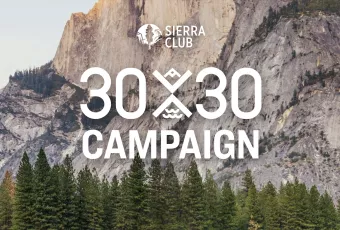Lake Tahoe — During the evening of July 10th, the U.S. Senate passed the Lake Tahoe Restoration Reauthorization Act. Originally passed in 2016, the Lake Tahoe Restoration Act gave $114 million in federal dollars to protect Lake Tahoe from wildfires…
Land Conservation
Land Conservation
We must protect 30% of lands by 2030 to fight the climate and extinction crisis. Protecting wild places will keep drilling and logging from dumping pollution into the air, sequester emissions, provide protection from extreme weather, homes for wildlife, and opportunities for people to enjoy the outdoors together.
Paria Rimrocks, Grand Staircase-Escalante National Monument, Utah
About Our Program
Our campaign focuses on protecting lands as a climate solution. Safeguarding these places will reduce our carbon pollution and conserve these places for future generations.
Read MoreRegional Campaigns
Help save Our Wild America
Our natural heritage is threatened by mining, drilling, and the devastating effects of climate disruption. We must protect our land and water so plants and animals can survive and thrive for generations to come.
A Vision to Save Lands, Water, and Climate
Protecting at least 30 percent of lands and waters by 2030 can fight the climate crisis, protect clean air and water, and provide endless ecological benefits.
Press Releases
NEVADA — On June 12th, the Senate Subcommittee on Public Lands, Forests, and Mining, chaired by Senator Cortez-Masto (D-NV) will receive testimony about the proposed Southern Nevada Economic Development and Conservation Act (SNEDCA), commonly known…
NEVADA — During the evening of May 8, the House of Representatives passed the Mining Regulatory Clarity Act, a harmful bill that walks back environmental protections, threatening the health of communities and negatively impacting public lands.
Missoula, MT - Today, a coalition of conservation groups participated in the first day of a three-day meeting held by the U.S. Forest Service intended to reach a resolution on objections the agency received in response to the highly-controversial…
State Leaders Urge Swift Action to Conserve Public Lands, Preserve Cultural Resources, and Protect Wildlife Habitat
